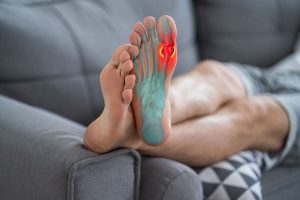Growing numbers of folks are turning to CBD or cannabis products to treat skin conditions like acne or rosacea, but researchers warn that the science on their safety and power hasn’t kept up with demand.
When more than 500 adults were asked about their use of CBD (cannabidiol) or marijuana, fully 17.6% said they used an over-the-counter cannabis product to treat skin conditions such as acne, psoriasis, rosacea or eczema without a recommendation from a dermatologist, and even more people were interested in trying these products.
CBD is derived from hemp, a cousin of the marijuana plant, but unlike THC (delta-9-tetrahydrocannabinol), the active component in marijuana, CBD doesn’t get you high.
“People are using these products without the direction of a doctor, and even those who weren’t using them are interested in learning more,” said study author Dr. Adam Friedman, chair of dermatology at the George Washington School of Medicine and Health Sciences in Washington, D.C.
It’s time for science to catch up, he said.
There are some promising early animal data that suggests how these products may help treat inflammatory skin diseases. “We know that cannabinoids activate the body’s resolvin pathway, which resolves inflammation,” said Friedman. “Cannabinoids set the stage for inflammation to resolve and recruit the players that are essential to cleaning up the damage from inflammation.”
About 89% of folks said there is a role for marijuana or other cannabis products in the treatment of skin disease, and the majority said they would be willing to try one of these products if they got a green light from their dermatologist.
Unregulated by FDA
Of the two-thirds of people who had seen a dermatologist, 20% were told to try a CBD product, primarily for acne and psoriasis. Just shy of 8% of these folks used medical cannabis, which requires an approved card from a dermatologist.
However, it’s buyer beware when it comes to CBD, as these products are not regulated by the U.S. Food and Drug Administration in the same way as drugs, Friedman said. Medical marijuana requires a doctor-issued prescription card and can only be purchased from state-run dispensaries so there is more quality control, he added.
So, how can you figure out if the product you choose is any good?
Always review the CBD product’s Certificate of Analysis (COA). This document provides results of any testing of the supplements, and companies can release it voluntarily, Friedman said. “If it is not online, reach out to the company, and if they don’t share it, that’s a red flag,” he noted.
Look at the other ingredients, too, he said, because “if you have sensitivity to other actives, you could react.”
And never use these products in place of prescribed treatments for your skin disease, Friedman stressed.
The findings were published in the January issue of the Journal of Drugs in Dermatology.
More research needed
Other experts not involved with the study point out there’s still a lot to learn about the role of CBD and medical marijuana in skin and other diseases.
“Everything from the correct component CBD or THC, the proper dose and the proper formulation still really needs to be hammered out,” said Dr. Peter Lio, a clinical assistant professor of dermatology and pediatrics at Northwestern University Feinberg School of Medicine in Chicago.
“There is some evidence that topical CBD products can have anti-itch, anti-inflammatory, and even wound-healing properties in skin disease,” he said. “These also appear very safe and do not have the same issues as products that contain THC, which is the psychoactive component of the marijuana plant.”
Always do a patch test, Lio stressed: “Any new product could potentially cause issues, especially in those with more sensitive skin.”
It makes sense that people are turning toward these products, said Dr. Mark Moyad. He is the Jenkins/Pokempner Director of Preventive and Alternative Medicine at the University of Michigan Medical Center in Ann Arbor.
“Unfilled, unmet or unsatisfied needs and expectations of some of the conventional options may drive people to try CBD or medical marijuana for skin conditions,” Moyad explained.
Unfortunately, drug interactions and risks are being learned on the fly, he noted.
“These products are here to stay and people need answers, which means more funding should be dedicated to objective research because we need to find out where these products might be truly helpful,” Moyad said.
More information
Harvard Medical School has more about cannabidiol.
SOURCES: Adam Friedman, MD, professor and chair, dermatology, George Washington School of Medicine and Health Sciences, Washington, D.C.; Peter Lio, MD, clinical assistant professor, dermatology and pediatrics, Northwestern University Feinberg School of Medicine, Chicago; Mark Moyad, MD, MPH, Jenkins/Pokempner Director of Preventive and Alternative Medicine, University of Michigan Medical Center, Ann Arbor; Journal of Drugs in Dermatology, January 2022
Source: HealthDay
Copyright © 2025 HealthDay. All rights reserved.

















